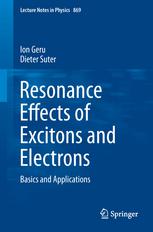

Most ebook files are in PDF format, so you can easily read them using various software such as Foxit Reader or directly on the Google Chrome browser.
Some ebook files are released by publishers in other formats such as .awz, .mobi, .epub, .fb2, etc. You may need to install specific software to read these formats on mobile/PC, such as Calibre.
Please read the tutorial at this link: https://ebookbell.com/faq
We offer FREE conversion to the popular formats you request; however, this may take some time. Therefore, right after payment, please email us, and we will try to provide the service as quickly as possible.
For some exceptional file formats or broken links (if any), please refrain from opening any disputes. Instead, email us first, and we will try to assist within a maximum of 6 hours.
EbookBell Team

4.8
34 reviewsThis book presents the various types of resonance effects on excitons, biexcitons and the local electronic centers (LEC) in solids, such as paramagnetic and paraelectric resonances on excitons, exciton acoustic resonance at intra- and interband transitions, radio-optical double resonance on excitons, hole-nuclear double resonance on localized biexcitons, ENDOR and acoustic ENDOR on LEC. The criteria for the generation of coherent photons, phonons and magnons by excitons are explained. The interactions of excitons and biexcitons with paramagnetic centers and nuclear spins, the indirect interaction between the PC through a field of excitons as well as the quasienergy spectrum of excitons and spin systems are discussed. It is proved that the interaction of paramagnetic centers with excitons increases the spin relaxation rate of paramagnetic centers in comparison with the case of their interaction with free carriers. The giant magneto-optical effects in semi-magnetic semiconductors are theoretically interpreted.
In recent years, a new perspective has been added to these systems and their interactions: They can be used for storing and processing information in the form of quantum bits (qubits), the building blocks of quantum computers. The basics of this emerging technology are explained and examples of demonstration-type quantum computers based on localized spins in solids are discussed.